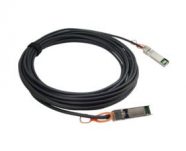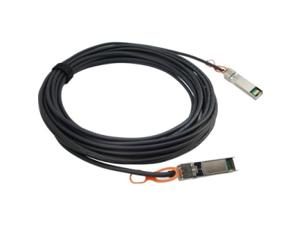SFP cables suck and I hate working with them.
Did you know Josh hates SFP cables? Even delicious 10GbE can't save them.
Last week I had to head to one of our colocation sites to retrieve some hardware to be moved to another city, and to test out some new swank jank 10GbE switches. These new switches run over SFP+, which means making sure the switches are compatible with the transceivers on the cables. As soon as I discovered this was what was on the to-do list for the day, my stress levels immediately rose.
See, SFP+ cables are great in theory. They’ve got a little PCB with a fancy clip, they do 10GbE, and… Well, that’s about it. It’s a cable. It is a conduit for electrons to move.
What I hate most about SFP cables is the clip and tab. It’s truly awful design – if you break the plastic tab your only hope for disconnecting the cable is to get a small screwdriver or something similar into the latching mechanism. This is where switch and cable designers must want you to lose your temper.
Switch designs, for some brilliant reason, have the ports of the SFP cables oriented such that the latches are facing one another on switches where there’s two rows of ports stacked one on top of another (or, at least the switches I’ve encountered). This means that if you make the mistake (or are forced to due to capacity) of connecting two SFP cables one on top of each other and break the tabs, they’re fused to the switch permanently for all intents and purposes. Depending on the design of the latching mechanism on the cable, there may very well be no feasible way to get a screwdriver or other tool into the gap.
I know what you’re thinking. I must be doing it wrong. Like most hardware in IT, there’s a bit of a trick to it. I’ve learned that you’ve got to simultaneously push the cable as far into the port as you can while pulling on the tab separately to make sure there’s as little pressure and friction as possible on the latch so you can have the clip gently slide over the latching point inside the switch’s SFP port. But sometimes it’s not that easy. Different manufacturers build their cables slightly differently, some latches are more stubborn than others, and some tabs are built out of crappier plastics. I’ve broke tabs off while trying to be as gentle as possible; sometimes it just can’t be helped.
I’ll fully admit I’m not the best rack monkey in the jungle. Maybe I don’t have the patience, the dexterity, or maybe I just don’t know my own strength (I like option C) but something about the design here just doesn’t add up. I emphatically do not subscribe to the notion of “you’re holding it wrong” – the engineer’s job is to design products and technology that is effective (check), practical (check), and easy to use (big fat red X).
I mentioned earlier that not all manufacturers build their cables the same. In practice, this means your cables can have compatibility issues, which is very strange in a world dominated by the universal RJ45 connector. To be fair, this is more on the switch manufacturer than the cable – but it’s still a frustrating point of contention to require testing of your cables on any new switches. My colleague Trevor has a wonderful review of the Ubiquiti’s SFP EdgeSwitch models that absolutely refused to talk to two different brands of cable in both SFP and SFP+ flavors that we had on hand, and I spent a few hours in a cold, dusty data center that I’ll never get back thanks to it. Woe is me.
Oh, the things we do for IOPS…
- Video Review: Solarwinds Virtualization Manager - February 17, 2017
- ioFABRIC Vicinity 1.7 Video Review - December 1, 2016
- Marvel vs Capcom 4 rumors gain momentum - November 29, 2016
- SFP cables suck and I hate working with them. - November 1, 2016
- Lit Screens: Killer robots, exploding phones, and new controllers - October 14, 2016
- Preorders are crap and you’re part of the problem - October 13, 2016
- Esports acquisitions, Virtual Reality and Political Overtones, Oh My! - October 11, 2016
- Playlist-based Matchmaking is crap. - October 6, 2016
- Kerbal Space Program devs jettison their (un)payloads from Squad - October 6, 2016
- TwitchCon, Brooklyn Beatdown, No Man’s Sky and Hearthstone - September 30, 2016







